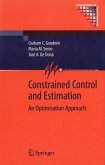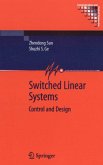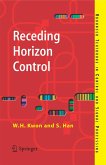There are many highly effective optimization, feedback control, and automation systems embedded in living organisms and nature. Evolution persistently seeks optimal robust designs for biological feedback control systems and decision making processes. From this comprehensive text you will gain knowledge of how mimicry of such biological processes can be used to solve optimization, control, and automation problems encountered in the construction of high technology systems. Mathematical stability analysis is treated for a number of cases, from attentional systems to social foraging swarm cohesion properties. Bio-inspired optimization and control methods are compared to conventional techniques with an objective to provide a balanced viewpoint.
- A companion web site, continually updated by the author, will provide you with further examples and design problems, solution hints, lecture slides, a running lab and ongoing self-study problems and resources.
- MATLAB® code is provided to solve a number of key problems.
- Focus lies on verifying correct operation of technologies via a process of mathematical modelling and analysis complimented by computer simulations.
- Written from an engineering perspective, methods are applied to extensive real-world applications, from ship steering to cooperative control of a group of autonomous robots.
Aimed primarily at graduate courses and research, much of the material has been successfully used for undergraduate courses. This dynamic textbook sends an injection of new ideas into engineering technology and the academic community.
Biomimicry uses our scienti?c understanding of biological systems to exploit ideas from nature in order to construct some technology. In this book, we focus onhowtousebiomimicryof the functionaloperationofthe "hardwareandso- ware" of biological systems for the development of optimization algorithms and feedbackcontrolsystemsthatextendourcapabilitiestoimplementsophisticated levels of automation. The primary focus is not on the modeling, emulation, or analysis of some biological system. The focus is on using "bio-inspiration" to inject new ideas, techniques, and perspective into the engineering of complex automation systems. There are many biological processes that, at some level of abstraction, can berepresentedasoptimizationprocesses,manyofwhichhaveasa basicpurpose automatic control, decision making, or automation. For instance, at the level of everyday experience, we can view the actions of a human operator of some process (e. g. , the driver of a car) as being a series of the best choices he or she makes in trying to achieve some goal (staying on the road); emulation of this decision-making process amounts to modeling a type of biological optimization and decision-making process, and implementation of the resulting algorithm results in "human mimicry" for automation. There are clearer examples of - ological optimization processes that are used for control and automation when you consider nonhuman biological or behavioral processes, or the (internal) - ology of the human and not the resulting external behavioral characteristics (like driving a car). For instance, there are homeostasis processes where, for instance, temperature is regulated in the human body.
- A companion web site, continually updated by the author, will provide you with further examples and design problems, solution hints, lecture slides, a running lab and ongoing self-study problems and resources.
- MATLAB® code is provided to solve a number of key problems.
- Focus lies on verifying correct operation of technologies via a process of mathematical modelling and analysis complimented by computer simulations.
- Written from an engineering perspective, methods are applied to extensive real-world applications, from ship steering to cooperative control of a group of autonomous robots.
Aimed primarily at graduate courses and research, much of the material has been successfully used for undergraduate courses. This dynamic textbook sends an injection of new ideas into engineering technology and the academic community.
Biomimicry uses our scienti?c understanding of biological systems to exploit ideas from nature in order to construct some technology. In this book, we focus onhowtousebiomimicryof the functionaloperationofthe "hardwareandso- ware" of biological systems for the development of optimization algorithms and feedbackcontrolsystemsthatextendourcapabilitiestoimplementsophisticated levels of automation. The primary focus is not on the modeling, emulation, or analysis of some biological system. The focus is on using "bio-inspiration" to inject new ideas, techniques, and perspective into the engineering of complex automation systems. There are many biological processes that, at some level of abstraction, can berepresentedasoptimizationprocesses,manyofwhichhaveasa basicpurpose automatic control, decision making, or automation. For instance, at the level of everyday experience, we can view the actions of a human operator of some process (e. g. , the driver of a car) as being a series of the best choices he or she makes in trying to achieve some goal (staying on the road); emulation of this decision-making process amounts to modeling a type of biological optimization and decision-making process, and implementation of the resulting algorithm results in "human mimicry" for automation. There are clearer examples of - ological optimization processes that are used for control and automation when you consider nonhuman biological or behavioral processes, or the (internal) - ology of the human and not the resulting external behavioral characteristics (like driving a car). For instance, there are homeostasis processes where, for instance, temperature is regulated in the human body.
From the reviews:
The book is well-written and succeeds in its stated goal of providing a rich overview on the subject of biologically inspired "intelligent Control" for both students and researchers in the controls community. Although the book is aimed at readers with graduate degrees, it can also be used by undergraduate students who are sufficiently advanced in their understanding of control theory.
The text is amply illustrated with charts and graphs, as well as important mathematical equations, although this book makes a point of not going too deeply into the mathematics... The margins of the text are usefully annotated with statements that seek to summarize key points that the author wishes to bring to the reader's attention.
The author also maintains a companion website that is continually updated and provides the reader with further examples and design problems, solution hints, lecture slides, and Matlab codes to help solve a number of key problems... the book is amply supported by an extensive reference list with 560 entries that serve as a "gateway" to publications on both the subjects covered in the book and those that have been omitted.
At 926 pages, this book serves as a hefty but useful introduction and overview to a fascinating and growing field of engineering. It succeeds in its stated goal of providing the reader with a modern overview of biomimicry.
IEEE Transactions on Automatic Control 51 (2006) 1406 - 1407 (Reviewer: Jonathan K. Chow)
"The recent book ... is a welcome addition to the field of intelligent control, providing a good treatment on how to use our understanding of biological systems for the development of optimization algorithms and feedback control systems. ... The book is quite readable, and it challenges the readers to explore further ideas and issues in the field. In this sense, the main objectives of the author have been successfully achieved. ... the book will find itsappropriate place in university lecture rooms and libraries." (Clarence W. De Silva, SIAM Reviews, Vol. 47 (4), 2005)
The book is well-written and succeeds in its stated goal of providing a rich overview on the subject of biologically inspired "intelligent Control" for both students and researchers in the controls community. Although the book is aimed at readers with graduate degrees, it can also be used by undergraduate students who are sufficiently advanced in their understanding of control theory.
The text is amply illustrated with charts and graphs, as well as important mathematical equations, although this book makes a point of not going too deeply into the mathematics... The margins of the text are usefully annotated with statements that seek to summarize key points that the author wishes to bring to the reader's attention.
The author also maintains a companion website that is continually updated and provides the reader with further examples and design problems, solution hints, lecture slides, and Matlab codes to help solve a number of key problems... the book is amply supported by an extensive reference list with 560 entries that serve as a "gateway" to publications on both the subjects covered in the book and those that have been omitted.
At 926 pages, this book serves as a hefty but useful introduction and overview to a fascinating and growing field of engineering. It succeeds in its stated goal of providing the reader with a modern overview of biomimicry.
IEEE Transactions on Automatic Control 51 (2006) 1406 - 1407 (Reviewer: Jonathan K. Chow)
"The recent book ... is a welcome addition to the field of intelligent control, providing a good treatment on how to use our understanding of biological systems for the development of optimization algorithms and feedback control systems. ... The book is quite readable, and it challenges the readers to explore further ideas and issues in the field. In this sense, the main objectives of the author have been successfully achieved. ... the book will find itsappropriate place in university lecture rooms and libraries." (Clarence W. De Silva, SIAM Reviews, Vol. 47 (4), 2005)








